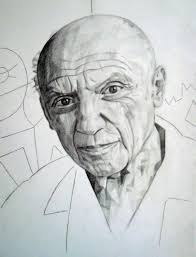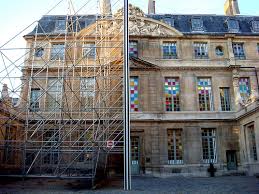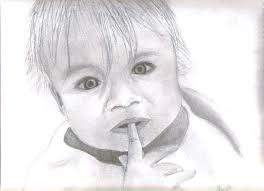Source:Goolge.com.pk
Picasso Pencil Drawings Biography
dominated the development of the visual arts during the first half of the 20th century. His virtuosity, imagination, and expressive power made an impressive contribution to the era of the arts. Along with Georges Braque, Picasso is best known as one of the creators of Cubism, though he utilized many styles during his career.
In the paintings of his Blue Period (1901-1904), such as The Old Guitarist, and The Blue Nude, Picasso worked with a monochromatic palette, flattened forms, and tragic, sorrowful themes.
The tragic themes and expressive style of Picasso's Blue Period began after a close friend committed suicide in Paris. During this time, the artist was sympathetic to the plight of the downtrodden and painted many canvases depicting the miseries of the poor, the ill, and those cast out of society. He too knew what it was like to be impoverished, having been nearly penniless during all of 1902.
The Old Guitarist
by Pablo Picasso
This bent and sightless man holds close to him a large, round guitar. Its brown body represents the painting’s only shift in color. Both physically and symbolically, the instrument fills the space around the solitary figure, who seems oblivious to his blindness and poverty as he plays. At the time the painting was made, literature of the Symbolist movement included blind characters who possessed powers of inner vision.
The thin, skeletonlike figure of the blind musician also has roots in art from Picasso’s native country, Spain. The old man’s elongated limbs and cramped, angular posture recall the figures of the great 16th-century artist El Greco.
Mother and Child
by Pablo Picasso
Picasso's Blue Period gave way between 1904 and 1906 to a style that stressed warmer colors and moods, featuring circus pictures, this period was called the Rose Period. These are among the most popular of Picasso's work - the wistful, attenuated circus performers, the figures bathed in roseate radiance. From here, Picasso progressed into the classicism revisited in 1906 and then into the development of Cubism.
In September of 1895, the young Picasso and his family moved from Malaga, Spain, where Picasso was born in 1881, to Barcelona, the Catalan city he came to regard as home. The family traveled on the cheap, in a small cargo boat. On arriving in a city enjoying a boom both industrial and cultural, they moved to a modest apartment near the waterfront - and the local art school, where Pablo was to study while his father, a struggling painter whose principal subject was pigeons, taught.
The Dance of Youth
by Pablo Picasso
Picasso grew up in a matriarchy. His female relatives pampered the young Picasso and outnumbered and outpowered his ineffectual father.








Picasso Pencil Drawings Biography
dominated the development of the visual arts during the first half of the 20th century. His virtuosity, imagination, and expressive power made an impressive contribution to the era of the arts. Along with Georges Braque, Picasso is best known as one of the creators of Cubism, though he utilized many styles during his career.
In the paintings of his Blue Period (1901-1904), such as The Old Guitarist, and The Blue Nude, Picasso worked with a monochromatic palette, flattened forms, and tragic, sorrowful themes.
The tragic themes and expressive style of Picasso's Blue Period began after a close friend committed suicide in Paris. During this time, the artist was sympathetic to the plight of the downtrodden and painted many canvases depicting the miseries of the poor, the ill, and those cast out of society. He too knew what it was like to be impoverished, having been nearly penniless during all of 1902.
The Old Guitarist
by Pablo Picasso
This bent and sightless man holds close to him a large, round guitar. Its brown body represents the painting’s only shift in color. Both physically and symbolically, the instrument fills the space around the solitary figure, who seems oblivious to his blindness and poverty as he plays. At the time the painting was made, literature of the Symbolist movement included blind characters who possessed powers of inner vision.
The thin, skeletonlike figure of the blind musician also has roots in art from Picasso’s native country, Spain. The old man’s elongated limbs and cramped, angular posture recall the figures of the great 16th-century artist El Greco.
Mother and Child
by Pablo Picasso
Picasso's Blue Period gave way between 1904 and 1906 to a style that stressed warmer colors and moods, featuring circus pictures, this period was called the Rose Period. These are among the most popular of Picasso's work - the wistful, attenuated circus performers, the figures bathed in roseate radiance. From here, Picasso progressed into the classicism revisited in 1906 and then into the development of Cubism.
In September of 1895, the young Picasso and his family moved from Malaga, Spain, where Picasso was born in 1881, to Barcelona, the Catalan city he came to regard as home. The family traveled on the cheap, in a small cargo boat. On arriving in a city enjoying a boom both industrial and cultural, they moved to a modest apartment near the waterfront - and the local art school, where Pablo was to study while his father, a struggling painter whose principal subject was pigeons, taught.
The Dance of Youth
by Pablo Picasso
Picasso grew up in a matriarchy. His female relatives pampered the young Picasso and outnumbered and outpowered his ineffectual father.
Picasso Pencil Drawings
Picasso Pencil Drawings

Picasso Pencil Drawings
Picasso Pencil Drawings
Picasso Pencil Drawings
Picasso Pencil Drawings
Picasso Pencil Drawings
Picasso Pencil Drawings
Picasso Pencil Drawings
Picasso - A Documentary
Pablo PICASSO. Guernica
No comments:
Post a Comment